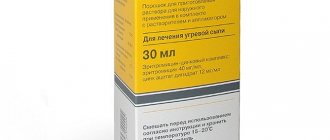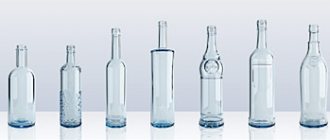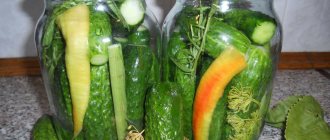How to store liquid wallpaper: features and secrets
Liquid wallpaper is a popular material widely used for wall coverings. Its distinctive feature is that the finish is applied with a spatula and is a kind of mix of traditional wallpaper and putty. They are made from various natural fillers, pigments and wallpaper glue. To apply to the wall, the mixture is first diluted with warm water.
The dry mixture for liquid wallpaper should be stored in a dry, dark place in a hermetically sealed bag!
You can purchase liquid wallpaper in the form of a dry mixture in transparent bags weighing from 1 kg. Recommended requirements for short-term storage are usual: it is enough to place them in a dry, dark place in a bag without access to air. At the same time, there are some peculiarities, knowledge of which will help you preserve any quantity in its original form.
If you still have liquid wallpaper after treating all the walls, do not rush to throw away the solution. It can be dried and added to leftovers for storage and emergency repairs.
How to store prepared glue so that it does not dry out and spoil?
The length of time the diluted glue retains its working properties largely depends on how it is stored. Different adhesive compositions have different storage conditions. If you ignore them, any solution, no matter how long its shelf life, will quickly deteriorate. For convenience, detailed information on how to properly store different types of glue is presented in the table:
| Type of adhesive composition | Storage conditions | What to do with the glue before use | |
| Temperature | View | ||
| Wallpaper | Reduced, but not minus (for example, in the refrigerator) or room temperature (18–24°C). The lower the temperature, the longer the glue retains its properties. | The glue should be stored in a tightly closed container, removing foreign objects (rollers, stirring tools, brushes) from it. If it does not have a lid, you can cover it with polyethylene so that no air gets inside. | The solution must be mixed thoroughly. You cannot mix freshly prepared glue or a product with a different composition into it. |
| Tiled | Room | Before removing the remaining glue until the next use, so that it does not lose its properties, you need to fill it with cold water, mix the mixture with a mixer, and then tightly close the container with the adhesive composition with a lid or plastic wrap. | Before use, drain the water, stir the settled mass with a mixer, add the dry mixture and mix a new portion of glue. |
| Homemade paste | Not higher than 18˚C | It is recommended to store the remaining paste in a tightly closed container, for example, in the refrigerator. If you want to preserve its properties for a long time, you can add a small amount of a preservative component, for example, alcohol or vodka. | If the paste has thickened, it is recommended to dilute it with warm water to the required consistency before use. |
Liquid wallpaper question answer
Question: Is it possible to apply liquid wallpaper to the ceiling?
Answer: Yes. Liquid wallpaper is easily applied to walls, ceilings and other curved surfaces, including columns, arches, etc.
Question: Is it possible to apply liquid wallpaper in a thicker layer?
Answer: Yes. However, it must be taken into account that when applying a thicker layer of liquid wallpaper, the material consumption will be greater. For example: the average consumption of one package, with a layer thickness of 1 mm, is 4 sq.m., and with a layer thickness of 2 mm, the consumption will double and one package will only be enough for 2 sq.m.
Question: Is it possible to apply liquid wallpaper to drywall?
Answer: Yes. Detailed instructions for preparing a plasterboard surface are described in this article.
Question: How and in what can liquid wallpaper be mixed?
Answer: Instructions for mixing liquid wallpaper are here. You can knead in any clean, plastic or enamel container (without chips or damage). You can knead at home even in the bathroom, because... Remaining material is easily washed off with water and leaves no traces.
Question: How long can liquid wallpaper be stored in kneaded form?
Answer: Ready-made liquid wallpaper is stored in a tightly tied package (bag) for up to 2 weeks.
Question: What does liquid wallpaper consist of?
Answer: Liquid wallpaper consists of components of natural origin and is absolutely harmless. They contain: natural cellulose, silk fiber, mineral filler, colored quartz and decorative additives, such as glitter. The glue included in liquid wallpaper is made from cellulose. All components of Silk Plaster liquid wallpaper are environmentally friendly and safe.
Question: What surfaces can liquid wallpaper be applied to?
Answer: Bare concrete, putty wall, plastered brick, sections of walls with metal parts, wooden surfaces, plywood, fiberboard, MDF, plasterboard surfaces. Before application, surfaces must be prepared in accordance with the instructions.
Question: What is the service life of liquid wallpaper?
Answer : Liquid wallpaper is a durable material, because... It has no joints and there is no room for it to come apart. Therefore, the service life depends on you.
Question: Can pets damage liquid wallpaper?
Answer: Of course they can cause damage, but the defect can be easily eliminated. Simply moisten the damaged area with water and smooth it with your finger or trowel (trowel).
Question: Is liquid wallpaper sensitive to temperature?
Answer: They are not sensitive to temperature effects, they can be applied both to the loggia and to the wall inside which there is a heating pipe. However, it must be taken into account that when applying the temperature should be positive (preferably not lower than +15). It is also not recommended to apply to very hot surfaces, chimneys, stoves, etc.
Question: In what rooms can liquid wallpaper be applied?
Answer: Silk Plaster liquid wallpaper is certified by the Sanitary and Epidemiological Station and is recommended for indoor use. They can be applied in any room, namely: offices, bedrooms, halls, hallways, kitchens; liquid wallpaper is also great for children's rooms, because This material is environmentally friendly, safe and elastic, plus you can create various designs. However, we do not recommend applying the material in rooms with high humidity, such as bathrooms. But, if you apply protective acrylic varnish, this becomes possible.
Question: is it possible to apply a new layer of liquid wallpaper without removing the old layer?
Answer: Yes, it is possible, provided that there is no heavy contamination on the old surface. You only need to paint over the old surface with water-based paint. But, if you decide to remove the previous layer, you can use it again.
Advantages and disadvantages
First, about the advantages of wallpaper, of which there are many.:
- This material can be used to decorate walls, ceilings, and any suitable surfaces.
- Even beginners can handle the application: they are easy to use.
- The liquid material has heat and sound insulating abilities.
- Environmentally friendly and safe, it can be chosen for decorating children's rooms and kitchens.
- The composition of the wallpaper helps it fade more slowly in the sun and maintain a beautiful appearance for a long time.
- The components from which the composition is prepared belong to the group of substances with medium flammability and low flammability.
- If you need to re-glue them, getting rid of the old layer will be easy.
Minuses:
- The material cannot be used in rooms with high humidity.
- Application of liquid material takes a long time, the finished coating takes a long time to dry.
- The price of the material is higher than usual per roll.
We invite you to watch a video about the advantages and disadvantages of liquid wallpaper:
Requirements for wallpaper storage conditions
The requirements for a warehouse space depend on the goods stored in it. To ensure that the wallpaper does not lose its presentation, the following conditions must be met:
- the temperature in the room should be set from +5 to +20 degrees;
- Wallpaper can deteriorate when exposed to direct sunlight and moisture, so it is best to store it in a dry, clean and dark place;
- rolls are placed vertically and are not removed from the factory boxes. If a store has a storage area for goods, then the boxes are placed lying down. But it is not recommended to stack them on top of each other to avoid jamming the bottom roller;
- It is more profitable to store photo wallpapers in a warehouse lying down, one box in height on a shelf. This will prevent damage to the tube when removing it.
A well-designed warehouse will ensure reliable protection of goods, improve the functioning of the store and increase the efficiency of wallpaper sales.
Materials and proportions for preparing liquid wallpaper
The example used printer paper.
For 1 kg of paper you will need:
- 6 liters of water;
- water-based tint to add color 100-200 ml;
- 0.4 kg PVA glue;
- 0.4 kg of gypsum or alabaster;
- decorative elements - wool fibers, glitter, cotton wool, beads, mica powder, etc. 10 - 20 g., marble chips 50 - 100 g.;
- wallpaper glue for paper wallpaper – ¼ pack.
Proportions for preparing liquid wallpaper.
Liquid wallpaper, 1 kg: how many squares
The consumption of a package of material depends primarily on the skill of the worker. If this is a professional craftsman, the consumption of materials will be minimal. If you are a beginner, more materials will be used. However, a beginner can improve their performance after just a couple of hours of work.
The consumption of 1 kg will occur as follows:
- If you apply wallpaper manually, 1 kg of weight is enough for 4-5 sq. m. wall surfaces if the layer thickness is 1.5-2.5 mm. Material consumption will also increase if the walls contain unevenness and potholes.
- If you apply the material using a spray gun, 1 kg is enough for 6-7 square meters. m. Thanks to the gun, it becomes easier to control the thickness of the layer, as a result, the coating of the walls will be very uniform, every meter will save costs. A good option for saving wallpaper would be to pre-paint the walls in a color similar to the wallpaper.
Recommendations for using Silk Plaster liquid wallpaper
To achieve a better level of adhesion of the coating to the wall, you can apply a primer for liquid wallpaper Silk Plaster. The process of applying the primer is very simple, you need to create 2 thin layers and allow time to dry - about a day. These layers give the wall waterproof features and better adhesion properties. The primer of this brand costs about 300 rubles for a package of 800 grams. This pack is enough to treat 3.5-4 square meters of wall.
In addition, try to keep all the necessary tools and products with you. Calculate the costs of the material in advance and buy as much as is sure to last. If there is a shortage of dry mixture, a situation may arise when the contrast does not match, this happens for several reasons:
- such material was not found on the market;
- the degree of mixing the last time and the next time did not match;
- the solutions stood in their finished form for different amounts of time;
- The layer and application strength are different.
How to reduce consumption
You can reduce the consumption of liquid wallpaper when finishing walls and ceilings in various ways:
- when applying liquid wallpaper using a spray gun, you can achieve a minimum thickness of no more than 1 millimeter;
- careful leveling of the base and applying a layer of primer under liquid wallpaper will reduce material consumption by reducing the thickness of the coating;
- perfectly white putty will prevent thin layers of finish from showing through;
- thorough mixing of the material will avoid the formation of lumps and clots of cellulose fibers and reduce the thickness of the decorative layer;
- By using dissolved remnants of the previous coating in your work, you can save on the purchase of new material.
An important point in saving decorative composition is experience and skill in application. When doing the work for the first time, it is unlikely that you will be able to maintain a uniform thickness of the coatings.
Application process step by step
- First, mix the finished mixture thoroughly. You can add a little water to it.
- Apply a small amount of the compound to the wall anywhere using a trowel. Its edge needs to be slightly raised in the direction of movement. The smaller the angle between the wall and the surface of the tool, the thinner the applied layer will be.
- The coating will be solid, so it doesn’t matter where you start finishing. You can start from the corner. On walls where there are sockets and switches, applying liquid wallpaper should begin from there.
AttentionFor each approach, you need to completely cover one entire wall, from corner to corner, so that there is no difference in color.
- When an area of about 1 square meter of wall has been covered, the area must be well leveled. The wall is sprayed with water from a spray bottle, then passed over with a roller, pressing slightly on the tool. It is better to use a roller with sparse and hard pile, collected in bunches. The length of the villi should be no more than 3-4 mm.
- To make the joints invisible, spray the edges of the dried coating with a little water before applying new portions of the mixture to adjacent sections of the walls.
If the apartment has optimal humidity and ventilation, the liquid wallpaper will dry completely within 24-48 hours. A lot depends on the external conditions in the room and the thickness of the finished layer.
Tips for storing liquid wallpaper
Dry material can be stored in a plastic bag for a very long time if it is well packaged. A prerequisite is the absence of moisture and direct sunlight. But if the liquid wallpaper has already been diluted, it will remain usable for only 2 to 4 days. Therefore, you need to correctly calculate the amount of solution required for application to the walls.
You can store wallpaper for quite a long time, but you need to do it correctly, following all the recommendations given in the article.
How to make the mixture correctly?
It is not difficult to prepare the mixture for application; the main thing is to adhere to the rules that will be described below.
Instructions
To mix 1 package you will need a container with a volume of at least 12 liters. With a smaller volume, it will be difficult to knead, since the prepared and swollen mixture will fall over the edge.
Important
You can soak several packages separately or all together. The second option will require a container of 20 liters or more. The basin or bucket must be clean, free of foreign odors.
What do we have to do:
- Pour the dry decorative mixture into a large container and fill it with warm water. The water temperature should be no higher than 35 degrees.
- Mix the solution so that there are no lumps left. It is better to do this manually, since using a construction mixer damages the structure of the material.
- Knead the thick mass until the solution has a homogeneous consistency. Don't forget to use rubber gloves for this.
- When the mixture is ready, transfer it to a plastic bag or cover with film.
- The finished mixture should be soaked for at least 10-12 hours. During this time, the adhesive composition in liquid wallpaper diluted with water can completely dissolve. If the mixture is not kept for the specified time, glue clumps will complicate the application process. In addition, stains may appear after the walls dry.
If you pour very hot water over the dry mixture, the wallpaper will deteriorate and become unsuitable for wall decor. Too cold water can greatly delay the preparation of the solution.
Proportions
Advice
Liquid wallpaper can be diluted in different proportions, but more often at the rate of 2.5 to 7.5 liters of water per 1 package of the mixture.
Therefore, before you start decorating the walls, you need to read the instructions on the packaging, since wallpaper from different manufacturers and even different collections of the same brand may have different requirements regarding the preparation stages.
Soaking process
Due to the fact that the material is sold dry, it is very important to soak liquid wallpaper correctly. This is not as difficult to do as it might seem, the main thing is to follow the proportions specified by the manufacturer.
First you need to pour the contents of the package into a plastic container, then add the required amount of warm water (the temperature should not be higher than 45 degrees). With the correct ratio of liquid and material, a mixture of optimal density will be obtained.
Then you need to thoroughly stir the composition; you should not rush when carrying out manipulations. It is highly recommended not to use a construction mixer in order to minimize the risk of damage to large fractions of the mortar.
At the end of cooking, cover the container with a lid and leave for 8-12 hours. It should be noted that when soaked, the material can be stored for no more than five days without losing its adhesive properties. Before use, the composition must be mixed thoroughly.










